Market Impact
A major challenge here is simply deciding how to compare the processors to other CPUs from AMD and Intel on the market.
AMD Ryzen Threadripper Pro 3955WX v. AMD
To us, there are three main competitive lines: the AMD Ryzen, EPYC, and Threadripper (non-Pro.) While there are other members of the Threadripper Pro family, the 32 core and 64 core chips are much larger and more expensive so those are a fairly easy decision. Luckily, deciding on competition relative to AMD means we have more straightforward positioning than we thought there was before getting into the exercise.
While the AMD Ryzen series has up to 16 cores, the reason one gets the Threadripper Pro over a Ryzen part is not purely core count. With Threadripper Pro we get vendor/ platform supported ECC RDIMM support with 8-channel memory. That means we get ECC as well as more memory capacity. Beyond the memory side, we also get a much larger I/O footprint since this is based on an EPYC 7002 layout with a chipset. If you simply need connectivity then the Threadripper Pro goes well beyond the capabilities of the Ryzen series despite an overlapping core count.
On the EPYC side, we think this is a fairly easy discussion as well. The Threadripper Pro platform allows for higher-TDP 280W parts which means we get higher clock speeds without the higher pricing from the EPYC 7F52 or EPYC 73F3. If one needs more than eight DIMM slots or dual-socket, then EPYC is a better option. To us, a major feature though is the chipset. Since the Threadripper Pro series has the WRX80 chipset, we get bountiful I/O such as 10Gbps USB connectivity but also nice workstation features such as audio out and WiFi.
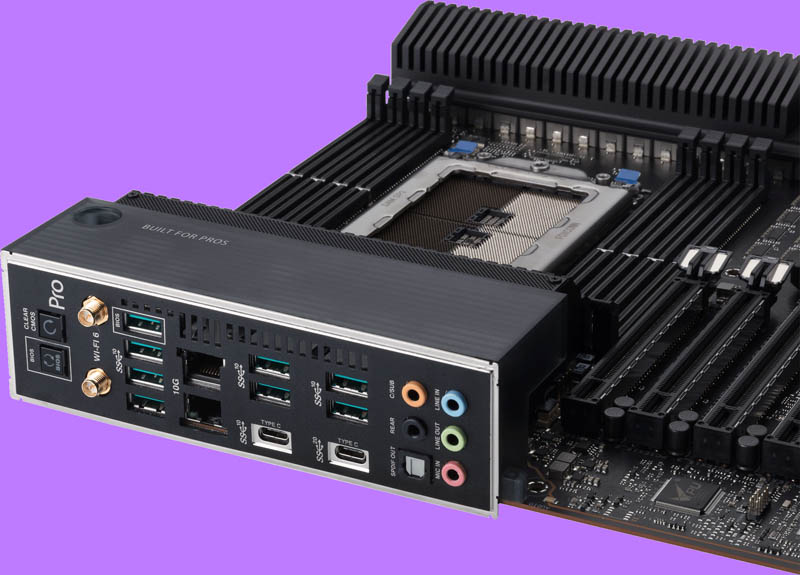
Many of these features can be added to an EPYC platform, but it is usually better to have the chipset to put lower-value I/O onto while keeping the main PCIe lanes free. We did an AMD EPYC 7002 Rome v Threadripper for workstations and some of that gap closes with the Threadripper Pro, but some are still very valid.
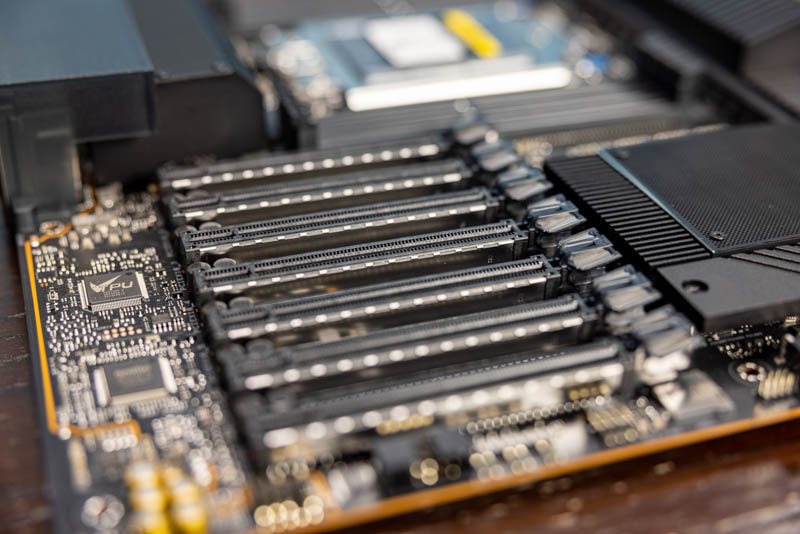
Compared to the AMD Threadripper non-Pro series, we think that the real value proposition is the expanded I/O configuration. Beyond having simply more PCIe lanes, the fact that the Threadripper Pro has ECC RDIMM and LRDIMM support is a big deal.
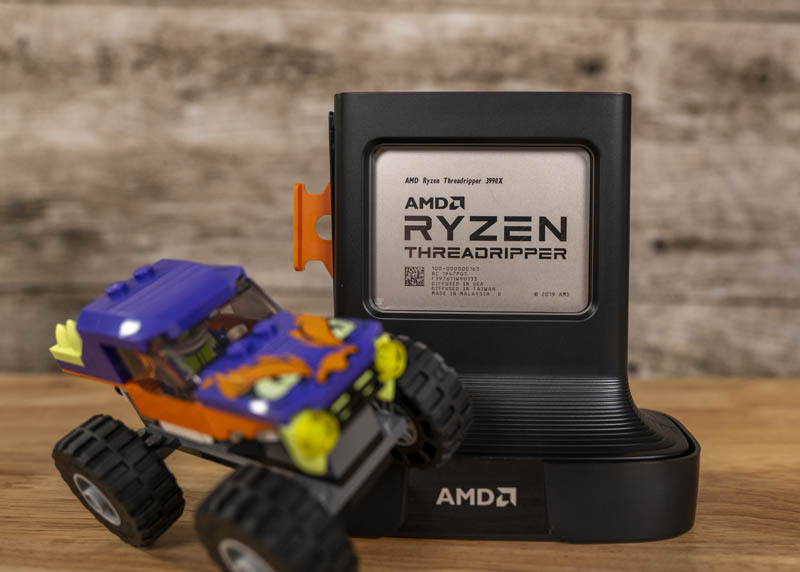
There are many Threadripper users that simply want more memory capacity and full ecosystem support (which is different from “it works”) on a platform. The challenge at the lower-end 16-core part range is that 256GB on a standard Threadripper system using 4-channel 2DPC 32GB UDIMMs is a lot of memory at 16GB/ core. The memory capacity and bandwidth advantage are more seen at the higher core count Threadripper Pro parts. If you simply need ECC RDIMM support though, then the 3955WX makes sense.
AMD Ryzen Threadripper Pro 3955WX v. Intel
This is one where we are simply going to say that Intel needs to refresh its chips. Now that the Intel Xeon Ice Lake Edition is available, Intel only has server chips that would come in competition, and the single-socket Xeon platform only has 64x PCIe Gen4 lanes. Since we view this 3955WX as a good processor powering a great platform, Intel needs an update with DDR4-3200, PCIe Gen4, and such before really competing in this segment. Again, we have to take the 3955WX’s perspective that it is primarily driven by providing an excellent platform into account.
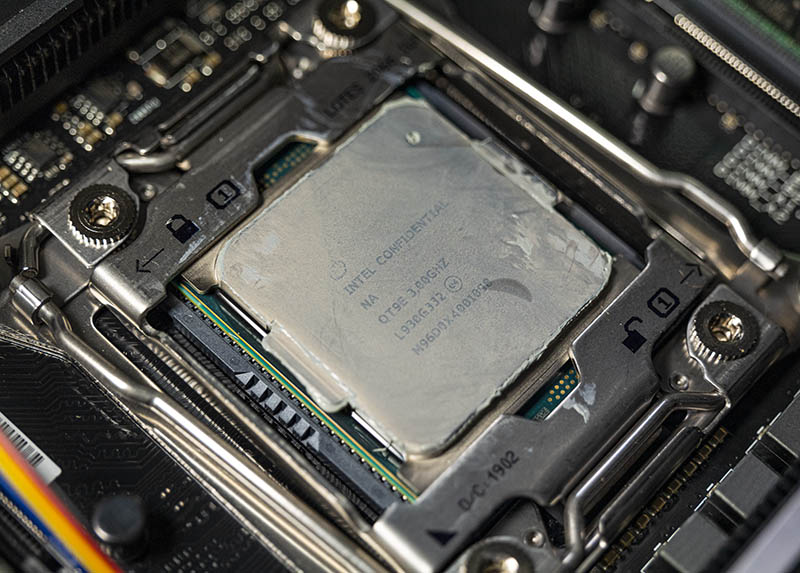
The Intel Xeon W-2295 is perhaps the closest competitor with 18 cores. At the same time, it has less memory capacity and is still a PCIe Gen3 part with fewer lanes. In some tests, the extra cores and single die design flourishes, but the majority of our readers will prefer the larger AMD platform in this workstation segment. Of course, this is effectively comparing the highest-end part from that Intel series versus the low-end part from the AMD series.
Intel just needs to launch a new 10nm or multi-chip design in this space.
Final Words
If we are being forthright, this is not our favorite Threadripper Pro part, and perhaps that is the point. The Threadripper Pro 3975WX and 3995WX provide significantly more performance that is likely better balanced with the platform capabilities. At the same time, those are significantly more expensive parts and not practical for every application.
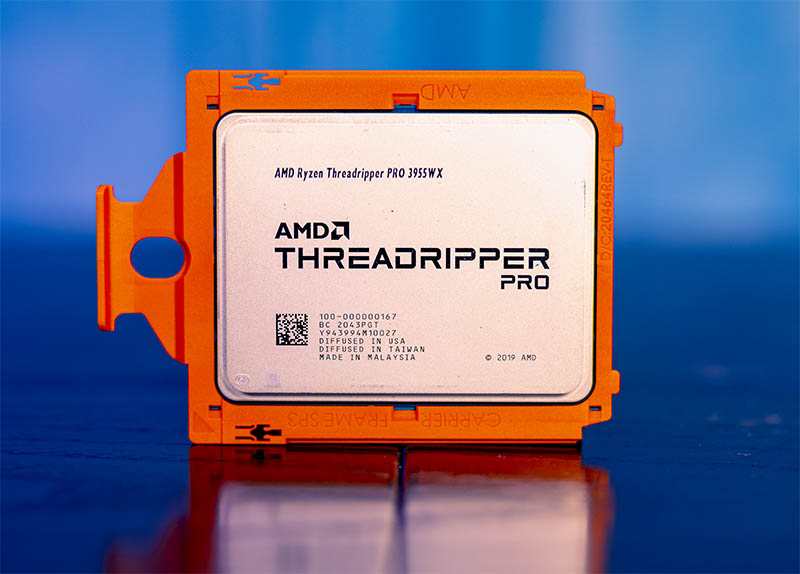
As we tested the Threadripper Pro 3955WX, we think we understand where this fits into the higher-end framework. This chip is designed as more of a mainstream entry point to the higher-end platform. At the same time, AMD is balancing not upsetting the higher-dollar per-core EPYC sales. Given that this is effectively an EPYC processor for workstations, indeed our ASUS Pro WS WRX80E-SAGE SE WIFI and even the Lenovo ThinkStation P620 both feel a lot like server platforms when in use, we can understand the positioning.
Overall, if you need the I/O of the Threadripper Pro platform yet not the extreme core count of the higher-end (and cost) parts, then the AMD Ryzen Threadripper Pro 3955WX can make a lot of sense.




Does this chip suffer from the same half memory bandwidth limitation like the Epyc 7282? From the diagram it’s not immediately clear whether this is 2CCDx2CCX design or 4CCDx1CCX. we can be pretty certain it’s the former, but has this been validated in some way?
Did you have any issues booting Linux on this motherboard? The ASUS support website only shows that it supports Windows